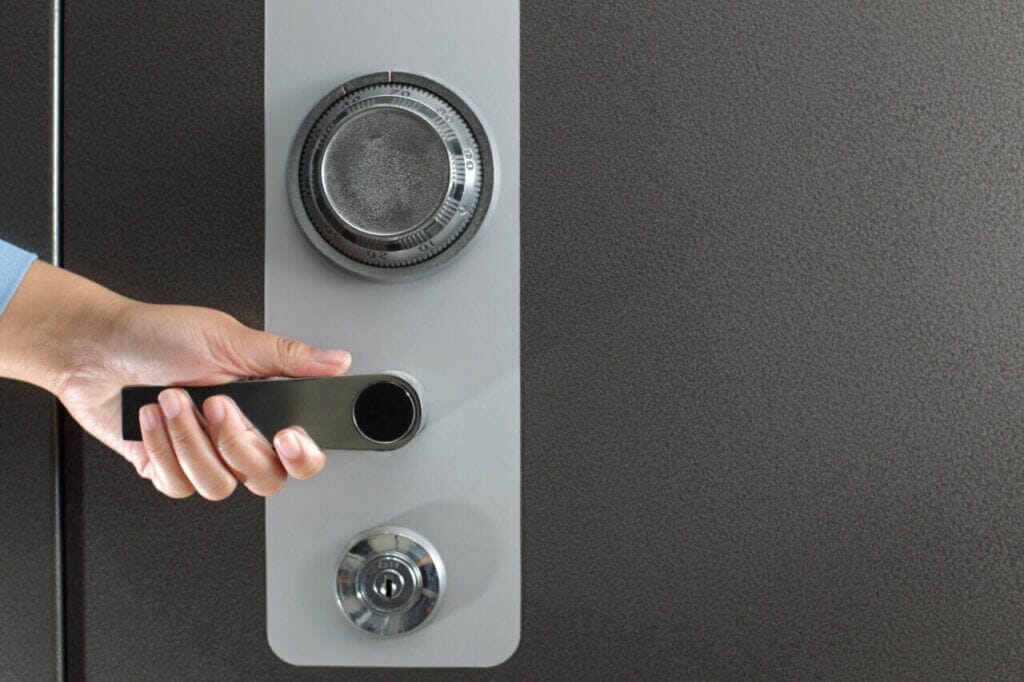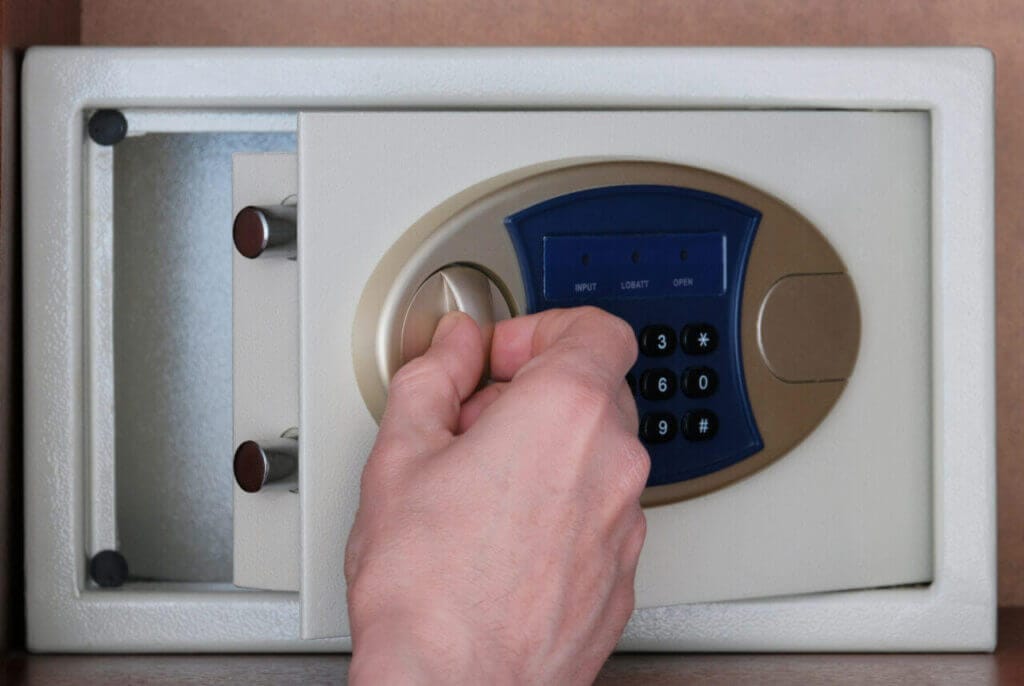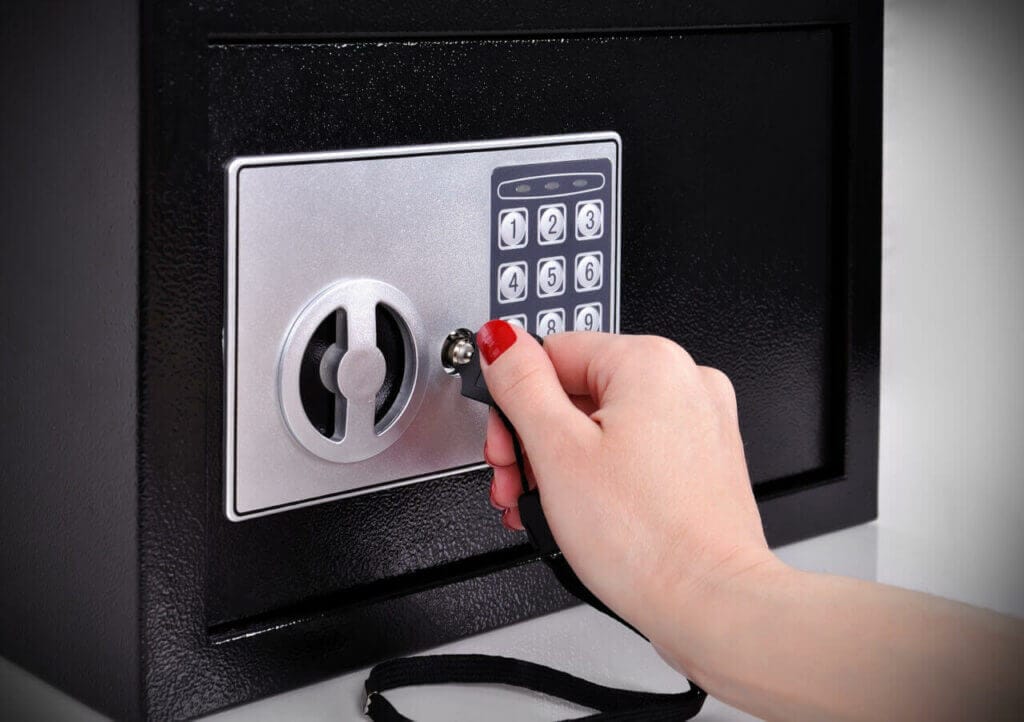You need to take something out of your safe with a sheer urgency. Hence, you hurriedly try to unlock and open your safe… only to be hit with the dreadful realization that it is not opening! Could it have chosen a worse timing to give out?! There is no convenient time to be locked out of safe, but the time when you need to access the safe in urgency is especially all the worse. In such situation, you need to keep your composure and figure out the best course of action so that you can regain access to the valuables within your safe as soon as possible.
There are many issues that can be causing the issue, and the difficulty of diagnosing the problem and things to try to fix it can vary. Some behavior not letting you in may even be intended, and this would make you realize that the ever-so-boring manual is worth skimming for sure! We will go over some common issues that can be encountered with safes, but keep in mind that safes are very intricate devices and the potential issues can be countless.
In many cases, deducing the the reason your safe won’t open on your own can be futile, and implementing a solution by yourself can even risk damaging the safe. A safe professional can promptly resolve it for you by safely opening the safe. An expert for safes can also service the lock for you on a regular basis so that you do not get caught off by such unpleasant situation.
1. Jammed Bolt Work
The main bolt work is an essential internal component for allowing the safe to open or close. If the bolt is unable to retract, then the safe door would not be able to open either. This is generally due to friction resulting from accumulation of debris and dirt or lack of lubrication.
You can attempt to unjam the bolt by hitting the location where the bolt is located with a bit of hard force. You can utilize your kicking moves for it, or a tool like a hammer if you do not feel quite up for that. You definitely want to avoid landing your moves on the handle or locking mechanism, no matter what your ‘weapon’ of choice is.
The blows upon where the bolt is located may loosen the bolt work. You can try attempting to open the door which should open if the bolt was indeed loosened up. However, if it was not loosened at all, then the solution may unfortunately be beyond your capabilities and best left to a safe technician.
2. Stuck Safe Handle
If the handle is stuck or moves only partially despite you entering the accurate code (assuming your dial is working properly), then this would prevent the safe from opening. One of the common reasons for this issue is a jammed door jamb bolt. This jam may happen due to grime buildup or lack of lubrication. Alternatively, it may occur due to overfilling the safe with items beyond a capacity that leaves room, which impedes the movement of the bolt.
You can shake the handle around and turn it, in an attempt to loosen it up. Try to do it plenty of times. If it is stubborn enough to not budge, then you have to up your game. If your safe can be moved easily, you can put it on a floor, with its hinge side facing the floor. Then make blows with a moderate force upon the other side with a hammer. After some blows, attempt to operate the handle again. This can help get the safe opened.
If even then it does not budge, then it is time to leave the work to a safe technician. You should not continue exerting force upon your safe as it can damage it. With all the aforementioned methods, make sure to be careful to not damage the locking mechanism and handle.

3. Relocker Triggered
Certain high quality safes have a built-in security mechanical device called a relocker. If the safe takes a heavy hit, fall, or penetration attempt, etc. then the relocker fires out a spring-loaded bolt that holds the door secured to its place. This is a sturdy and reliable mechanism that can resist a burglar’s attempt to gain access to your lock with physical force or penetrative tools.
While this handy mechanism is most likely to give you the peace of mind or prevent unauthorized access to your valuables, this mechanism is not immune to turning against you in the event of an unintentional heavy force upon it. When this happens, fret not! Because there is good news. And well, there is also bad news.
The bad news is that it is not possible for you to undo the reaction of relocker on your own, as a layperson. But before you panic, the good news is an expert safe locksmith can reset the relocker easily and quickly. The safe will need to be drilled in the procedure, but you do not have to worry about your safe getting damaged as the relocker is designed to be able to be reset without posing the damage.
The process will begin with the safe locksmith locating the drill point for the relocker. This drill point is kept adequately hidden and secure by the safe manufacturers, so that only the licensed safe locksmiths and safe crackers are likely to hold knowledge of it. The safe locksmith would then proceed with drilling into the found point and deactivate the relocker. Once the procedure is done, the locksmith would repair the drilled hole so that your safe is all secured up and ready to use again.
4. Weak or Dead Batteries of Electronic Safes
If an electronic safe won’t open, then a problem relating to the battery is a likely culprit. The most prominent problem coming from the battery is it running out. How long a battery can last depends largely upon the use. The more times you open the safe, the faster the battery will deplete. With a moderate level of usage, you would likely have to replace the battery at least once a year, and various times a year when it comes to heavy usage. A battery past its expiration date is not your reliable friend either, as it is likely to lose its effectiveness and be unable to properly power your safe.
Even if your battery is not past its lifespan, it may still be ineffective to power your safe if it is not delivering enough amperage that your safe needs. Especially a gun safe lock requires a high amperage to operate properly. While this can happen due to a depleted battery too, enough amperage may be out of capability of battery in the first place. This kind of issue would typically be posed by a cheap generic brand battery.
What can deceive you that the problem is not coming from a battery depletion or insufficient effectiveness is the safe partially operating. For example, the keypad may light up and beep, and you may even be able to input the code; but the battery would be too weak to open the safe. You may also find that you are able to input the code, but it is glitchy due to unsteady power; it may lag or ignore certain digits you input.
All in all, in order to avoid getting caught off guard by a battery that has decided to give out, you should always keep spare batteries as backup. Make sure they are from a reliable brand rather than a cheap generic brand, as well as that they are not past their expiration date.
5. Damaged Wiring of Electronic Safes
Electronic safes incorporate wiring in order to connect the keypad components and locking mechanism. Inputting the code wiring relays an electric signal from the keypad to the locking mechanism so that the safe can unlock. However, if this connection is deteriorated due to a wiring issue, then the keypad can no longer signal the locking mechanism to allow it to open the safe.
You may check on this issue by taking off the keypad to inspect the wires to see if there is something off.If the wiring appears to be loose, damaged or disconnected, then this is likely where the problem lies. However, as a layperson, you definitely should avoid taking on them. Fixing the wiring requires deep knowledge and is best left to a professional who possess the proper knowledge.
6. Lockout Mode of Electronic Locks
Did you forget the combination code, which was followed by you frantically trying out codes based on its vague memory in your mind? Plenty of us sure have been there, so no shame in that. However, lockout mode can backfire upon you in this scenario and get you locked out of safe. A lockout mode is a reliable security measure that temporarily blocks the safe upon a certain number of failed attempts with an inaccurate code. This is to prevent a burglar from trying to guess their way in based on any clues they may have.
However, this can go against you as well if you have forgotten the exact code. However, this lockout mode does not last long enough, so you do not have to worry about it. The typical duration is 10-20 minutes. Once that much time or the time described in your safe manual has passed, you can try again – and hopefully, you will get it this time! If you have forgotten your code and have no backup way in, then you can seek a safe locksmith’s services to change the code.
7. Time Delay of Electronic Locks
Your safe may have a security measure called the time delay feature. With this, even upon entering the right code, it would not open right away. You would have to wait for a certain duration until you can re-enter your code and finally open the safe. This is an anti-burglary reinforcement to prevent someone from breaking through the safe with code under a limited time-frame. The typical duration tends to be only 10-20 minutes long.
8. Shifted Mechanical Safe Combination Dial
Due to repeated usage over time, the dial can gradually shift from its place towards up or down. This means that the combination numbers would not match what you input anymore, and hence turn your accurate code into an inaccurate one. In order to test this potential issue, you can try adding or subtracting one or two numbers for each digit you input. For example, a dial code that is 1234-1234-1234 would become 2345-2345-2345 if you were to add one number to it. You do not have to go for a higher or lower number since it is highly unlikely for a drastic shift to happen unless the dial is severely damaged.
If this method does the work able to open the safe, then there you have the answer for what is causing you the woes. However, keep in mind that this is merely a short-term solution. You definitely need to get it resolved promptly and call a locksmith for safes so that it does not get damaged further and leave you in a pinch, nor confuse those who try to open the safe.

Call An Expert Safe Locksmith/Technician to Open the Safe Now
Safes have a very intricate structure. Navigating the way throughout it and trying to diagnose the problem and then implementing a solution can be a no easy feat for a layperson. It can be time-consuming too, which would be no good if you are in a hurry. Even worse, you can pose damage to your safe and then have to bear the further costs for repairs. Hence, you can have a go at simple and safe methods, but make sure to not exert excessive force upon your safe and leave the complicated work to a trusted safe technician.
If your safe won’t open and you are seeking reliable services to get it resolved, you can put your trust in Faster Locksmiths. We understand how incredibly disruptive and distressing it can be to be unable to access the valuables in your safe, as well as how essential prompt opening of your safe is without posing damage. With our 5 years of experience with resolving safe issues, we can promptly arrive and open your safe quickly without damaging it, as well as do any needed repairs to make sure it works securely. We can also help service your safes to decrease the likelihood of you getting into such a pinch and maximize its lifespan and reliability!
